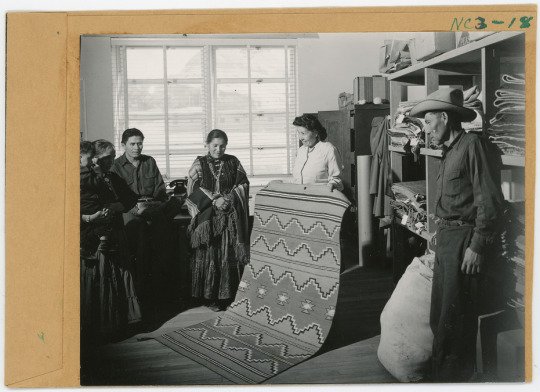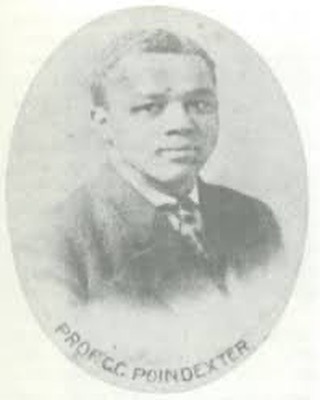A look inside the soul of music and the music of your soul! I will also share my thoughts on the black life experience.
Last active 60 minutes ago
Don't wanna be here? Send us removal request.
Text

AUDIOPHILE MAN - YOUTUBE REVIEW: AUDIOLAB 6000A MK2 INTEGRATED AMPLIFIER
Paul Rigby looks at the Mk.II version of Audiolab's classic 6000A integrated amplifier. Click: https://youtu.be/CihPKlB7teg #audiolab #amplifier #review #hifi #audiophile #youtube #video #technology #6000a
5 notes
·
View notes
Text
0 notes
Text
Living Where You Please - Shelley v. Kraemer
Living Where You Please – Shelley v. Kraemer



Today in History, May 3, 1948:
The US Supreme Court hands down a decision in Shelley v Kraemer, asserting housing rights for minorities.
In 1906 a nice two-story home was built in the 4600 block of Labadie Street in a neighborhood of St. Louis, Missouri. In 1911 residents of the neighborhood established a covenant which was common in America in the early Twentieth Century; the agreement ensured…
View On WordPress
3 notes
·
View notes
Text

Provenzal home design by @deboraaguiararquiteta
Get Inspired, visit www.myhouseidea.com
52 notes
·
View notes
Text
AUDIOPHILE MAN - YOUTUBE FEATURE: HiFi NEWS, ETC
Five news items from a past, exclusive Patreon News episode. If you would like to see the latest video episodes right now, click https://www.patreon.com/c/audiophileman.

To see this video, click: https://youtu.be/srWaoCCXE7c
8 notes
·
View notes
Text
0 notes
Text

The Navajo Arts and Crafts Guild buying rugs in Window Rock, Arizona, on March 27, 1943.
John and Agnez Anderson selling; Marie Martin buying.
Record Group 75: Records of the Bureau of Indian Affairs
Series: Photographs of Navajo Life in the Southwestern Region of the United States
File Unit: Arts and Crafts
Image description: Six people in a room with large shelves along one side. One woman is holding one end of an unfurled woven rug, which has straight horizontal stripes and stepped diagonal stripes in several different colors (well, different shades of gray in this black and white photo). A man in a cowboy hat stands to the side near the shelves, which hold folded rugs. Three adults stand on the other side of the room, looking at the rug; one woman is holding a small child.
106 notes
·
View notes
Text
0 notes
Text








Happy Black History Month
Black Jazz Musicians
Their names are presented below, in chronological order from top to bottom
Louis Armstrong 1901-1971
Ella Fitzgerald 1917-1996
Duke Ellington 1899-1974
Miles Davis 1926-1991
Billie Holiday 1915-1959
Count Baise 1904-1984
Sarah Vaughn 1924-1990
Nancy Wilson 1937-2018
4K notes
·
View notes
Text
https://youtu.be/9B7ZWDaKECI?si=xFf6HwQfex3zQCUm

(English / Español / Italiano)
On March 2, 1959, at 2:30 in the afternoon, a group of musicians entered an old church on 30th Street in New York that the Columbia record company had converted into a recording studio thanks to the special sonority of the place. The musicians belonged to the sextet of Miles Davis, trumpeter and composer extraordinaire, a cornerstone of modern jazz. The first to arrive was drummer Jimmy Cobb, who calmly and carefully set up his drum kit. Soon after, bassist Paul Chambers, saxophonists Cannonball Adderley and John Coltrane, pianists Bill Evans, who no longer belonged to the sextet but would record on this album, and Wynton Kelly arrived. Finally, Miles, the leader of the group. Without even knowing it, this first session and the second recorded on April 22 would become fundamental in the history of both jazz and music. The product of those two days would be called Kind of Blue and was released on August 17 of the same year.
------------------------------------------------------------------------------
El 2 de marzo de 1959, a las dos y media de la tarde, un grupo de músicos entraron a una antigua iglesia en la calle 30 de Nueva York que la compañía discográfica Columbia había convertido en estudio de grabación gracias a la sonoridad especial que tenía el lugar.Los músicos pertenecían al sexteto de Miles Davis, trompetista y compositor extraordinario, piedra angular del jazz moderno. El primero en llegar fue el baterista Jimmy Cobb quien con tranquilidad y esmero montó su batería. Poco después llegarían el bajista Paul Chambers, los saxofonistas Cannonball Adderley y John Coltrane, los pianistas Bill Evans, quien ya no pertenecía al sexteto pero que grabaría en este disco, y Wynton Kelly. Finalmente, Miles, el líder del grupo. Sin siquiera saberlo, esta primera sesión y la segunda grabada el 22 de abril se volverían fundamental tanto en la historia del jazz como de la música. El producto de ese par de días se llamaría Kind of Blue y salió a la venta el 17 de agosto del mismo año.
------------------------------------------------------------------------------
Il 2 marzo 1959, alle due e mezza del pomeriggio, un gruppo di musicisti entrò in una vecchia chiesa della 30ª strada a New York che la casa discografica Columbia aveva trasformato in studio di registrazione grazie alla particolare sonorità del luogo. I musicisti appartenevano al sestetto di Miles Davis, trombettista e compositore straordinario, pietra miliare del jazz moderno. Il primo ad arrivare fu il batterista Jimmy Cobb, che con calma e attenzione sistemò la sua batteria. Subito dopo arrivarono il bassista Paul Chambers, i sassofonisti Cannonball Adderley e John Coltrane, i pianisti Bill Evans, che non faceva più parte del sestetto ma che avrebbe registrato su questo album, e Wynton Kelly. Infine, Miles, il leader del gruppo. Senza nemmeno saperlo, questa prima sessione e la seconda registrata il 22 aprile sarebbero diventate fondamentali nella storia del jazz e della musica. Il prodotto di quei due giorni si sarebbe chiamato Kind of Blue e sarebbe stato pubblicato il 17 agosto dello stesso anno.
Fuente: Pasión por el Jazz y Blues
14 notes
·
View notes
Text

jazz singer Ella Fitzgerald in a photo from 1970. She was the first Black woman to win a Grammy Award (in 1958).
2K notes
·
View notes
Text

Barbara Jean McNair (March 4, 1934 – February 4, 2007) was a singer and theater, television, and film actress. Her career spanned over five decades appearing in television, film, and on stage. Her professional career began in music during the late 1950s, singing in the nightclub circuit. In 1958, she released her debut single “Till There Was You” from Coral Records which was a commercial success. She performed all across the world, touring with Nat King Cole and later appearing in his Broadway stage shows I’m with You and The Merry World of Nat King Cole in the early 1960s. By the 1970s, she gradually changed over to acting in films and television; she played Sidney Poitier’s wife in They Call Me Mister Tibbs! and its sequel, The Organization. She returned to performing in nightclubs and on cruise ships.
With her parents’ persuasion, she began singing in school productions and during church services. She studied music at the American Conservatory of Music in Chicago. She attended UCLA because she had been raised to believe that whatever people planned to do with their lives they had to go to college to learn how to do it. She dropped college after one year when she felt it had nothing to do with what she wanted to accomplish. #africanhistory365 #africanexcellence #womenshistorymonth
5 notes
·
View notes
Photo

Charles Cardoza Poindexter (March 10, 1880 – June 3, 1913) was a professor at Fisk University. He was known for being the founder of Alpha Phi Alpha Society which became Alpha Phi Alpha Fraternity, Incorporated. He was born in Pennsboro, West Virginia. He attended Ohio State University (1899-1903) earning a BS in Agriculture. He wrote “The Development of the Spikelet and Grain of Corn.” He attended a graduate program at Cornell University (1905-1907). He married Helen Florence Newton (1906-1913). He served as a Virginia delegate to the Association of American Agricultural Colleges and Experiment Stations Convention. He was the organizer of a group of literary students at Cornell University. The group consisted of 15 students and included females. The group met every two weeks at 421 North Albany Street. He felt the group should serve the cultural and social needs of the African American community and not be an elite secret society. In December 1905, he organized a meeting of students which included Murray, Ogle, Morgan T. Phillips, Chapman, Kelley, Callis, Tompkins, and Tandy. In March 1906, the name Alpha Phi Alpha was introduced. Under his leadership of the first banquet, initiation procedures, and policies were introduced. A vote confirmed the name Alpha Phi Alpha with the colors of old gold and black. The initiation of new members took place on October 30, 1906, at a Masonic Hall including Eugene Kinckle Jones, Lemuel Graves, and Gordon Jones. In his absence at a meeting, the fraternity idea was pushed for a vote by Murray and was seconded by Robert H Ogle. He submitted a letter of resignation. He would remove himself from the organization after this period. In January 1907, he resigned when he took a new job in Hampton. This job was as an assistant agriculturist. The term used for him as agreed by members of the fraternity was Precursor. At Fisk University, he served as the Professor of the Agriculture Department and Biology. While there he implemented programs such as the annual spring day celebration. Among his botany students was Alpha Phi Alpha historian Charles H. Wesley. #africanhistory365 #africanexcellence https://www.instagram.com/p/Cpm6ZR4rAEN/?igshid=NGJjMDIxMWI=
5 notes
·
View notes




